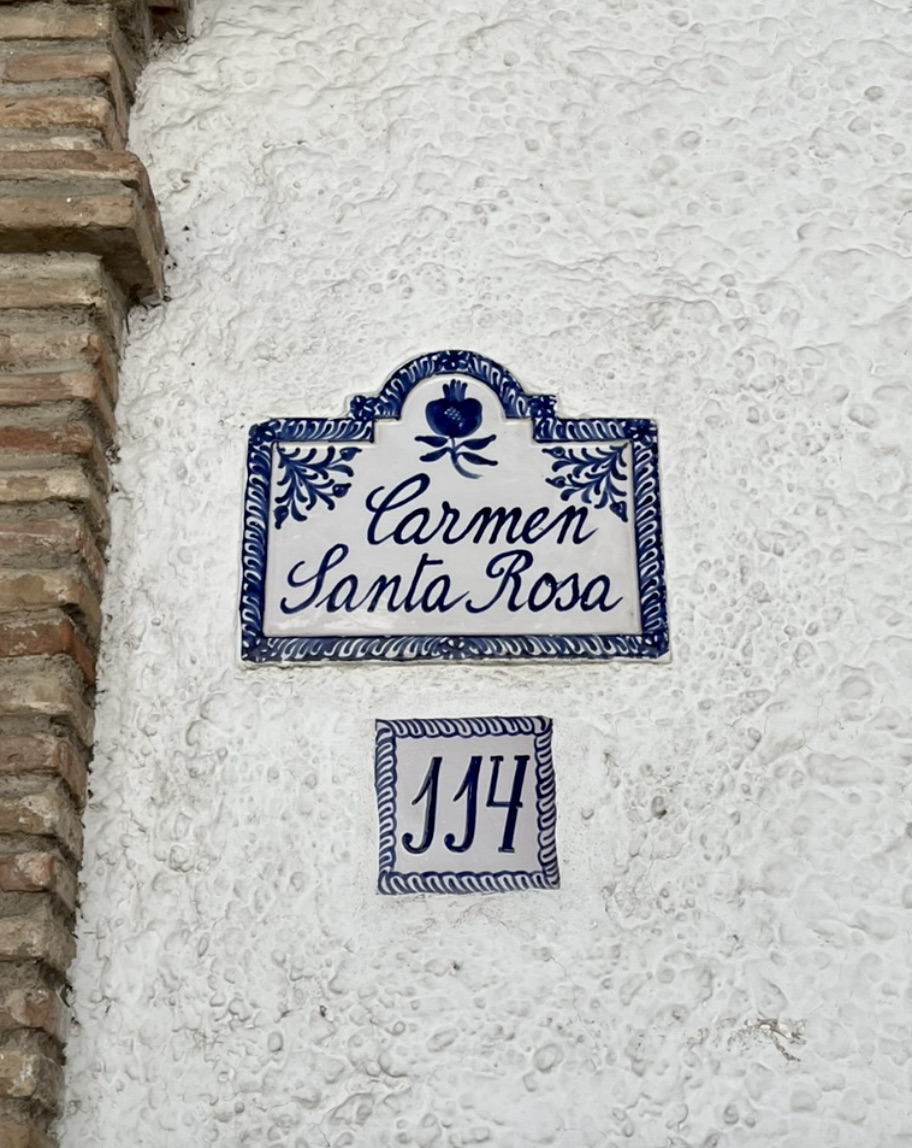I’ve noticed Granada to be full of two things: pomegranates and heartfelt graffiti. Often, these two are distinct from one another, while other times, the graffiti may be superimposed on the red fruit. A post-arrival discovery for many of us was the significance of the city’s name; Granada being the Spanish word for pomegranate, and the granadinos have taken that and run with it. Pomegranates are incorporated into every aspect of the region, turning the city center into a life-size treasure hunt of hidden fruits. As an avid photo album curator, my newest one has been a collection of the many pomegranates I’ve stumbled upon, like I’m a little kid in Trader Joe’s with my mom again, looking for the hidden stuffed seal to get a roll of stickers.
This new game takes me back to the only thing I remembered from my high school psych class — the Baader-Meinhof phenomenon, or the frequency illusion, through which learning about something for the first time makes you feel like it is everywhere as a result of your individual knowledge of its existence. I have collected photos of pomegranates spouting water in fountains, painted onto exteriors of hotels and on the crest of every street sign and address label. The pomegranate stands almost as an artist’s signature would in the corner of a painting, adorning each blue and white painted tile with the city’s unique brand. Most are depicted with an S-shaped slice, revealing the pearly seeds inside. Below walls the color of strawberry ice cream, pomegranates act as dividers between street and sidewalk, the only buffer separating me from the cars that hurtle through streets they should never fit down. Instead of cobblestone, streets are littered with stone mosaics, many of which are formed in the shape of pomegranates, complete with their fruity crowns. Little trinket shops are filled with pomegranate memorabilia, from tiles and vases to paperweights and stuffed animals.
One day, Alice and I returned to our apartment to find a crate full of rosy pomegranates from our host family’s farm in Güéjar. Trinidad, who her family affectionately calls “Trini,” taught us how to cut the pomegranates without causing vibrant (and permanent) juice disasters and our salads are now decorated with the seeds. While you might be imagining a dark, wine-red seed, the ones here are much more translucent, with a light pink center that shines through.
While most graffiti in New York, or in my hometown of Los Angeles, can be crude or unintelligible, graffiti here is high in volume and sentiment. Side streets and main throughways alike are scattered with short messages without signatures. Naturally, I also have an album of street art that I’ve been collecting for years. Pre-Granada additions included inspirational scribbles of “send feet pics or ask for advice (or both!)” and “King Charles Murdering Noble Bloodline by Light Radiation.” Here, I’ve been snapping photos of messages that exhibit a love for the city and its people. A wall on the way to a lookout point said, “contigo en cualquier lugar del mundo se siente como en casa” (anywhere in the world with you feels like home), “quería morirme joven, contigo lo quiero tarde” (I wanted to die young, with you I want to live long) and “la vida es bonita si sabes vivirla” (life is beautiful if you know how to live it). The artists are neither picky nor extravagant, their notes written without any flourish, in black pen and placed anywhere.
All of this seems to contradict the idea of the “malafollá,” a negative characteristic attributed to the people of Granada. In place of the performative niceties of American service workers angling for tips, a Spanish clerk might snappily ask what you want as soon as you enter their establishment. While this may be a generalization, I’ve found the community of Granada to be very welcoming. I notice that what they lack in passing head nods and soft smiles, they make up for on their walls romanticized by a simple black ink and their genuine expressions of personality and kindness. In a coffee shop we found along a quiet side street (turn right at the Zara Home), the owner of the shop sat us at a table and described everything about her little store, La Qarmita. She sells used books, offers drawing materials (and lets you sell your art there if you finish), card games, and after a certain time, she turns the café into a live music venue complete with drinks and tapas that flow until 2 a.m. Running her shop appeared to be a one-woman show that she performed with gusto, personally greeting, seating and serving every group of customers that came in, giving all of us the same spiel. At one point, she asked us to translate when a group of customers came in that did not speak Spanish. Though her words were conveyed by the two of us, her excitement and generosity were universally understood.
My grandma told me studying abroad would be as much of an education “out of school” as it is in the classroom — though I didn’t predict I’d have fruit and spray paint to thank. Having things to look out for allows me to be a more conscious newcomer. While much is still being lost in translation at the dinner table (lots of “ohhh, sí,” context clues and Alice and I “mhm-ing” in unison), I’m picking up on slang from graffiti and street signs and constantly keeping my head up on the hunt for my next pomegranate. Two of my professors told us on the first day that the best way to blend into Spanish language and culture was a Spanish “novio,” something that unfortunately isn’t at the top of my hit-list, though Chip, a self-described (retired) voice actor in my class, shared that dating a Spaniard means you could get free Spanish practice “all night long.” Thanks, Chip.






































































































































































































